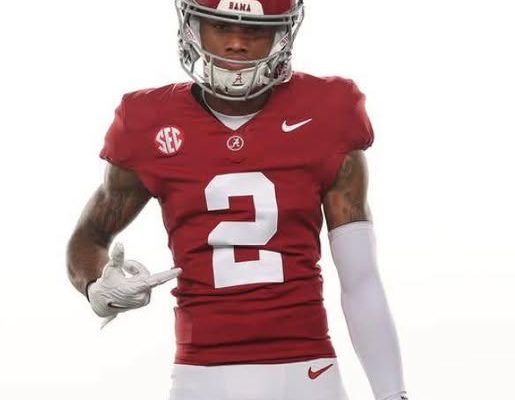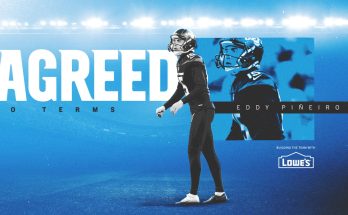College football has never been more lucrative for its brightest stars, and few stories illustrate that reality better than the latest news surrounding Alabama wide receiver Ryan Williams. According to Pete Nakos of On3, Williams is set to make north of $1.8 million this season through NIL opportunities, a figure that places him second among wide receivers in college football in terms of earnings. That kind of payday is not only eye-catching, it is historic in the sense of what it says about where the sport is headed, how quickly the landscape has shifted, and how much market power a single player can command before even reaching the professional ranks. Williams is more than just another highly regarded recruit wearing crimson and white—he’s the embodiment of the new era, where talent, branding, and business acumen come together to form a package that rivals the earnings of some NFL players still on rookie deals.
To put Williams’ situation in perspective, it is important to consider just how unprecedented the NIL era has been for college football. Not long ago, the very idea of a college athlete making money beyond the cost of tuition, room, and board would have been labeled impossible. For decades, players who accepted even the smallest improper benefits risked losing eligibility, with schools facing sanctions. Today, the tide has completely turned. NIL has opened the door for athletes to capitalize on their talents in ways that were once considered taboo, and Ryan Williams is riding that wave as well as anyone in the nation. His $1.8 million projection isn’t just a number—it’s a signal of his market value, his popularity, and the faith that brands and businesses have in his ability to drive attention and revenue.
For Alabama fans, Williams’ rise is particularly exciting. The Crimson Tide have long been a program that not only develops NFL-ready talent but also thrives in the spotlight of national attention. Players like Julio Jones, Amari Cooper, DeVonta Smith, and Jameson Williams have helped shape the wide receiver position at Alabama into what is now known as “Wide Receiver U.” In that lineage, Ryan Williams has the chance to carve his own story, and his NIL earnings suggest he has already captured the imagination of fans, brands, and observers across the sport. For a player who hasn’t yet reached his prime college years, commanding that level of financial clout only adds to the intrigue of what he can accomplish on the field.
The figure of $1.8 million also invites comparison to other top wide receivers in college football. While many schools are paying their star quarterbacks handsomely through NIL deals—given the nature of the position and its spotlight—wide receivers are increasingly proving to be marketable commodities in their own right. Social media presence, big-play ability, and the cultural pull of certain schools all factor into how these deals are structured. For Williams, Alabama’s enormous platform is certainly part of the equation, but it’s equally about his own reputation as one of the most electric young receivers in the nation. When fans see him on the field, they see highlight-reel potential every snap, and that translates directly into marketability off the field.
Critics, of course, will argue that figures like this distort the nature of college athletics, and that the focus on earnings could overshadow the spirit of competition or academics. But the reality is that the sport has already moved into this new paradigm, and athletes like Ryan Williams are simply the most visible examples of what it means to thrive in this environment. Instead of resisting the change, many fans are now curious to see how NIL impacts recruiting, team chemistry, and even on-field performance. If Williams can deliver in big games while also being one of the highest earners in the country, it will send a message to future recruits that not only is Alabama still the place to win championships, but also the place to maximize financial opportunities.
The pressure, though, is undeniable. With $1.8 million in earnings comes heightened scrutiny. Every dropped pass, every missed route, every off-field decision will be magnified in ways that players from earlier eras never had to experience. The money adds weight, and how Williams responds to that weight will be as much a part of his story as the touchdowns and receptions. Some athletes thrive under the spotlight, embracing the dual role of athlete and brand ambassador, while others struggle with the constant demands of fame and business expectations. For now, the consensus around Williams is that he has both the talent and the maturity to handle the moment.
There’s also the question of how this figure impacts team dynamics. In locker rooms, players have always understood that certain stars receive more attention and praise than others. But money introduces a new layer to that hierarchy. Will other Alabama players feel any tension knowing that Williams is making more than most of them combined? Or will they see it as motivation, a clear example of what’s possible if they continue to work and elevate their own brands? Alabama’s coaching staff, led by Kalen DeBoer in this new era, will play a pivotal role in managing these dynamics. The key will be keeping the focus on team goals while acknowledging the individuality of players who now operate as entrepreneurs as much as athletes.
From the fan perspective, this news sparks a range of emotions. Some are thrilled to see players finally being compensated in line with their contributions to the sport’s billion-dollar industry. Others worry about the widening gap between programs with enormous NIL collectives and those without the resources to compete financially. Alabama, with its tradition and massive national following, is naturally positioned to be at the forefront of the NIL arms race. But what does that mean for parity in college football? Will we see a handful of schools dominate not just on the field but also in the financial marketplace, leaving others behind? These are questions fans and analysts alike will continue to debate, and stories like Ryan Williams’ are the flashpoints around which those debates revolve.
Still, beyond the business talk and the broader implications, there’s the simple joy of watching a player like Williams perform. NIL or not, the game is still about what happens between the lines, and Williams has shown flashes of brilliance that make Alabama fans believe he could be the next in a long line of legendary Crimson Tide receivers. If he translates his potential into production—racking up yards, touchdowns, and highlight moments—his $1.8 million valuation will seem not just justified, but perhaps even conservative compared to the market value he could command in the future. The NFL, after all, pays elite receivers tens of millions of dollars annually, and Williams’ trajectory suggests he could one day be in that category.
It’s also worth considering how deals like this affect the perception of college athletes in the broader public. For years, fans saw players as amateurs, grinding for the love of the game and the dream of making it to the pros. Now, players like Williams are clearly professionals in every sense except for their official label. They negotiate contracts, build brands, and appear in marketing campaigns, all while juggling the demands of being a student-athlete. That dual life is not easy, but it’s a reality that today’s generation of players are learning to embrace. If anything, it prepares them even more thoroughly for the pressures of the NFL, where business considerations are always part of the equation.
As fans, it is worth asking ourselves: does this change how we watch the game? When we see Ryan Williams streaking down the sideline, making a diving catch, are we thinking about the $1.8 million he’s earning, or are we simply enjoying the athletic brilliance in front of us? Perhaps the answer is both. The money adds a layer of intrigue, a storyline to follow alongside the actual games. It gives us another reason to debate, another angle to analyze, another piece of the puzzle in understanding the evolving world of college football. But ultimately, the love of the game remains at the core, and players like Williams are the ones keeping that love alive, even in this new era of wealth and opportunity.
This is why stories like these demand conversation. They raise questions, spark debates, and invite fans to share their perspectives. Do you believe $1.8 million is too much for a college receiver? Do you see this as a positive step forward for player rights, or a dangerous precedent that could harm the balance of the sport? Are you excited to see how Williams performs under the weight of both expectation and financial success? These are the conversations that make college football so compelling—not just the games themselves, but the narratives that surround them.
So let’s hear it. What do you think about Ryan Williams’ $1.8 million valuation? Is it a fair reflection of his talent and marketability, or does it highlight problems within the NIL system that still need to be addressed? Does it make you more excited to watch Alabama this season, or does it change your perception of the sport you love? Share your thoughts, argue your positions, and engage with fellow fans, because the only thing more exciting than watching college football is talking about everything that comes with it.



